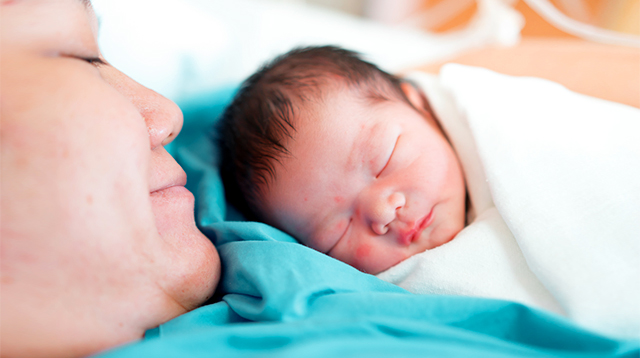
When it comes to childbirth, a vaginal delivery is considered to be the normal method of birth, but this isn’t always the best option. Here’s a look at vaginal birth versus cesarean sections, and the different types of vaginal birthing methods.
Cesarean Section (C-Section)
A C-section is when a surgical incision is made in the mother’s uterus for the baby to be delivered. This birthing method can be made with a vertical cut or with a horizontal cut. C-sections can be both planned and unplanned, as complications can arise during labor making a C-section the safest option for both the mother and the baby. A (planned) C-section is usually the best option for mothers if:
- Twins, triplets, or more multiples are expected
- The baby is in a breech position
- There’s a health issue that makes a vaginal birth unsafe
- The previous pregnancy was a C-section (though this isn’t always necessary)
Even though this method may be the best option in certain cases, it doesn’t come without risks. Because this is a surgery, there is a longer recovery period than a vaginal birth. There’s also the risk of an infection of the wound.
Vaginal Birthing Methods
A vaginal birth is the most common and usually the safest and healthiest option for most women. It’s associated with a lower risk of needing a blood transfusion, a reduced risk of postpartum infection, and a decreased risk of internal uterine scarring. There are also different vaginal birthing methods.
Water Delivery
This vaginal delivery method is when a woman goes through all or some stages of childbirth in a tub of water. Water births are often less painful and more relaxing for mothers compared to a traditional vaginal delivery without pain medications. However, like most vaginal births, a water birth is only recommended for low-risk pregnancies. There’s also a risk of bacteria lurking in the water and pain management options are limited.
Vaginal Birth After Cesarean (VBAC)
In the past, women who have had a C-section couldn’t have a vaginal birth for later pregnancies, but this isn’t the case anymore. However, it should be noted that VBAC is usually only recommended for low-risk pregnancies. Complications and underlying conditions can prevent a successful VBAC, and an emergency C-section may be necessary in some cases.
Operative Vaginal Delivery
One of the most common types of “operative” vaginal deliveries is with the use of forceps. This is when a healthcare provider uses an instrument shaped like a pair of large salad tongs to grab the baby’s head to help guide him or her through the birth canal. However, improper use of forceps can lead to birth injuries such as brain bleeds, facial nerve damage, paralysis, and seizures. Mothers who suspect their baby suffered an injury during birth should contact a birth injury lawyer.
Another delivery method similar to this is vacuum extraction. Instead of using forceps, a rigid cup with a handle and vacuum pump is used to guide the baby through the birth canal. This method can also result in birth injuries if not done correctly.
Natural Delivery
A natural vaginal delivery is considered to be a delivery without the use of pain medications, but it can also mean without the use of operative, induced, or assisted methods as well. The Lamaze method is often used during natural delivery, as it is a controlled breathing technique to increase relaxation. Hypnosis is another method used during natural deliveries, but it’s considered to be more of a philosophy than a technique. The biggest downside to natural births is the pain, but many women have successfully given birth naturally without any complications.
Induced Delivery
Labor doesn’t always happen on its own, or it may start and then stop. In this case, a labor induction is needed, resulting in an induced delivery. Medications and other techniques are used to induce labor, and labor-inducing is usually only done after 37 weeks of pregnancy. Unfortunately, inducing labor increases the risk of the uterine muscles improperly contracting, which can lead to injuries to the baby and the mother.
Assisted Delivery
Assisted delivery methods use the assistance of medications (for pain and/or inducing), operative tools, or simply the assistance of additional medical staff.
A C-section is pretty straightforward, and one of two main types of incisions is made. On the other hand, there are many methods of vaginal birth that a woman can choose from. Overall, women with low-risk pregnancies (i.e., no underlying conditions, carrying one baby, etc.) can choose to have any type of vaginal birth and even a VBAC birth.


